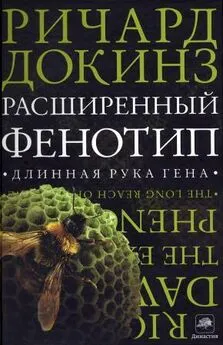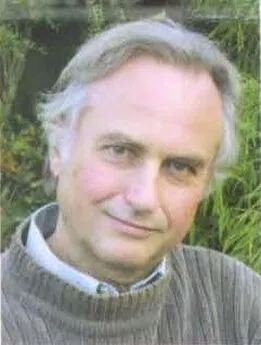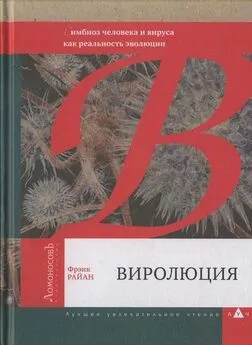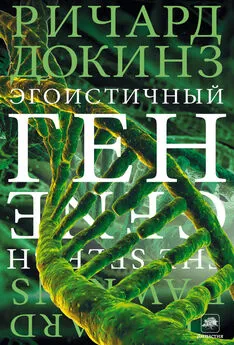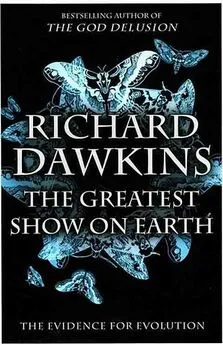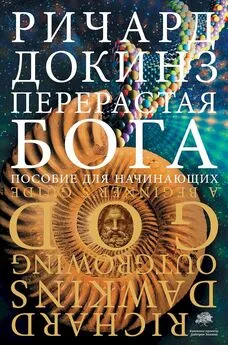Ричард Докинз - Расширенный Фенотип: длинная рука гена
- Название:Расширенный Фенотип: длинная рука гена
- Автор:
- Жанр:
- Издательство:Астрель
- Год:2010
- Город:Москва
- ISBN:978-5-271-31206-9
- Рейтинг:
- Избранное:Добавить в избранное
-
Отзывы:
-
Ваша оценка:
Ричард Докинз - Расширенный Фенотип: длинная рука гена краткое содержание
Richard Dawkins, 1982,1999 Afterword ©
Фенотип — совокупность характеристик, присущих индивиду на определённой стадии развития. Фенотип также можно определить как «вынос» генетической информации навстречу факторам среды.
Расширенный фенотип — это все воздействия, оказываемые геном на мир. Например, согласно Ричарду Докинзу, плотину бобров также как и их резцы можно считать фенотипом генов бобра. Psychedelic.
Расширенный Фенотип: длинная рука гена - читать онлайн бесплатно ознакомительный отрывок
Интервал:
Закладка:
Medawar,P. B. (1967). The Art of the Soluble. London: Methuen.
Medawar,P. B. (1981).Back to evolution. New York Review of Books 28 (2),34–36.
Mellanby,K. (1979). Living with the Earth Mother. New Scientist 84, 41. Midgley,M. (1979). Gene-juggling. Philosophy 54, 439–458.
Murray,J. & Clarke,B. (1966). The inheritance of polymorphic shell characters in Partula (Gastropoda). Genetics 54, 1261–1277.
Nabi,I. (1981). Ethics of genes. Nature 290,183.
Old,R. W. & Primrose,S. B. (1980). Principles of Gene Manipulation. Oxford: Blackwell Scientific.
Orgel,L. E. (1979). Selection in vitro. Proceedings of the Royal Society of London , В 205, 435–442.
Orgel,L. E. & Crick,F. H. C. (1980). Selfish DNA: the ultimate parasite. Nature 284, 604–607.
Orlove,M. J. (1975). A model of kin selection not invoking coefficients of relationship. Journal of Theoretical Biology 49, 289–310.
Orlove, M. J. (1979). Putting the diluting effect into inclusive fitness. Journal of Theoretical Biology 78, 449–450.
Oster,G. F. & Wilson,E. O. (1978). Caste and Ecology in the Social Insects. Princeton: Princeton University Press.
Packard,V. (1957). The Hidden Persuaders. London: Penguin.
Parker,G. A. (1978a). Searching for mates. In Behavioural Ecology (edsJ. R. Krebs& N. B. Davies),pp. 214–244. Oxford: Blackwell Scientific.
Parker,G. A. (1978b). Selection on non-random fusion of gametes during the evolution of anisogamy. Journal of Theoretical Biology 73, 1-28. {281}
Parker,G. A. (1979). Sexual selection and sexual conflict. In Sexual Selection and Reproductive Competition in Insects (edsM. S. Blum& N. A, Blum),pp. 123–166. New York: Academic Press.
Parker,G. A. & Macnair,M. R. (1978). Models of parent-offspring conflict. I. Monogamy. Animal Behaviour 26, 97-110.
Partridge,L. & Nunney,L. (1977). Three-generation family conflict. Animal Behaviour 25, 785–786.
Peleg,B. & Norris,D. M. (1972). Symbiotic interrelationships between microbes and Ambrosia beetles. VII .Journal of Invertebrate Pathology 20, 59–65. Pittendrigh,C. S. (1958). Adaptation, natural selection, and behavior. In Behavior and Evolution (edsA. Roe& G. G. Simpson),pp. 390–416. New Haven: Yale University Press.
Pribram,K. H. (1974). How is it that sensing so much we can do so little? In The Meurosciences, Third Study Program (edsF. O. Schmitt& F. G. Worden),pp. 249–261. Cambridge, Mass.: MIT Press.
Pringle,J. W. S. (1951). On the parallel between learning and evolution. Behaviour 3, 90-110.
Pugh,G. E. (1980). Behavioral science and the teaching of human values. UNESCO Review of Education. Vol.26, 2,103–120 Pulliam,H. R. & Dunford,C. (1980). Programmed to Learn. New York: Columbia University Press.
Pyke,G. H., Pulliam,H. R. & Charnov,E. L. (1977). Optimal foraging: a selective review of theory and tests. Quarterly Review of Biology 52, 137–154 Raup,D. М., Gould,S. J., Schopf,T. J. M. & Simberioff,D. S. (1973). Stochastic models of phylogeny and the evolution of diversity. Journal of Geology 81, 525–542.
Reinhard,E. G. (1956). Parasitic castration of Crustacea. Experimental Parasitology 5, 79-107.
Richmond, M. H. (1979). «Cells» and «organisms» as a habitat forDNA. Proceedings of the Royal Society of London , В 204, 235–250.
Richmond, М. H. & Smith, D. C. (1979). The Cell as a Habitat. London: Royal Society.
Ridley, M.(1980a). Konrad Lorenz and Humpty Dumpty: some ethology for Donald Symons. Behavioral and Brain Sciences 3,196.
Ridley,M. (1982). Coadaptation and the inadequacy of natural selection. British Journal for the History of Science 15, 45–68.
Ridley,М. & Dawkins,R. (1981). The natural selection of altruism. In Altruism and Helping Behavior (edsJ. R Rushton& R. M. Sorentino),pp. 19–39. Hillsdale, N.J.: Erlbaum.
Ridley,M. & Grafen,A. (1981). Are green beard genes outlaws? Animal Behaviour 29, 954–955.
Ridley,M. & Grafen,A. (in press). Are green beard genes outlaws? Animal Behaviour
Rose,S. (1978). Pre-Copernican sociobiology? New Scientist 80, 45–46. Rothenbuhler,W. C. (1964). Behavior genetics of nest cleaning in honey bees. IV. Responses of Fi and backcross generations to disease-killed brood. American Zoologist 4, 111–123. {282}
Rothstein,S. I. (1980). The preening invitation or head-down display of parasitic cowbirds. II. Experimental analysis and evidence for behavioural mimicry. Behaviour 75,148–184.
Rothstein, S. I. (1981). Reciprocal altruism and kin selection are not clearly separable phenomena. Journal of Theoretical Biology 87, 255–261.
Sahlins,M. (1977). The Use and Abuse of Biology. London: Tavistock. Sargent,T. D. (1968). Cryptic moths: effects on background selection of painting the circumocular scales. Science 159,100–101.
Sargent,T. D. (1969a). Background selections of the pale and melanic forms of the cryptic moth Phigalia titea (Cramer). Nature 222, 585–586.
Sargent,T. D. (1969b). Behavioural adaptations of cryptic moths. III. Resting attitudes of two bark-like species, Melanolophia canadana and Catocala ultronia. Animal Behaviour , 17, 670–672.
Sc haller,G. B. (1972). The Serengeti Lion. Chicago: Chicago University Press.
Schell,J. + 13 others(1979). Interactions and DNA transfer between Agrobacterium tumefaciens , the Ti-plasmid and the plant host. Proceedings of the Royal Society of London , В 204, 251–266.
Schlei DT,W. M. (1973). Tonic communication: continual effects of discrete signs in animal communication systems. Journal of Theoretical Biology 42, 359–386.
Schmidt, R. S. (1955).Termite ( Apicotermes) nests — important ethological material. Behaviour 8, 344–356.
Schuster,P. & Sigmund,K. (1981). Coyness, philandering and stable strategies. Animal Behaviour 29,186–192.
Schwagmeyer,P. L. (1980). The Bruce effect: an evaluation of male/female advantages. American Naturalist 114, 932–938.
Seger,J. A. (1980). Models for the evolution of phenotypic responses to genotypic correlations that arise in finite populations. PhD thesis, Harvard University, Cambridge, Mass.
Shaw,G. В. (1921). Back to Methuselah. Reprinted 1977. Harmondsworth, Middx: Penguin.
Sherman,P. W. (1978).Why are people? Human Biology 50, 87–95. Sherman,P. W. (1979).Insect chromosome numbers and eusocialit y. American Naturalist 113, 925–935.
Simon,C. (1979). Debut of the seventeen year cicada. Natural History 88 (5), 38–45‘. Г 7
Simon,H. A. (1962). The architecture of complexity. Proceedings of the American Philosophical Society 106, 467–482.
Simpson,G. G. (1953). The Major Features of Evolution. New York: Columbia University Press.
Sivinski,J. (1980). Sexual selection and insect sperm. Florida Entomologist 63, 99-111.
Slatkin, M. (1972). On treating the chromosome as the unit of selection. Genetics 72,157–168.
Slatkin,M. & Maynard Smith,J. (1979)-Models of coevolution. Quarterly Review of Biology 54, 233–263.
Smith,D. C. (1979). From extracellular to intracellular: the establishment of a symbiosis. Proceedings of the Royal Society of London , В 204,115–130. Southwood,T. R. E. (1976). Bionomic strategies and population parameters. In Theoretical Ecology (ed.R. M. May),pp. 26–48.Oxford: Blackwell Scientific.
Spencer,H. (1864). The Principles of Biology , Vol. 1. London and Edinburgh: Williams and Norgate.
Staddon,J. E. R. (1981). On a possible relation between cultural transmission and genetical evolution. In Perspectives in Ethology , Vol. 4 (EDSP. P. G. Bateson& P. H. Klopfer), pp. 135–145. New York: Plenum Press.
Stamps,J. & Metcalf,R. A. (1980). Parent-offspring conflict. In Sociohiology: Beyond Nature /Nurture? (edsG. W. Barlow& J. Silverberg),pp. 589–618. Boulder: Westview Press.
Stanley,S. M. (1975). A theory of evolution above the species level. Proceedings of the National Academy of Sciences, U.S.A. 72, 646–650. Stanley,S. M. (1979). Macroevolution, Pattern and Process. San Francisco: W H. Freeman.
Stebbins, G. L. (1977). in defense of evolution: tautology or theory? American Naturalist 111, 386–390.
Steele,E. J. (1979). Somatic Selection and Adaptive Evolution. Toronto: Williams and Wallace.
Stent,G. (1977). You can take the ethics out of altruism but you can’t take the altruism out of ethics. Hastings Center Report 7 (6), 33–36.
Symons,D. (1979). The Evolution of Human Sexuality. New York: Oxford University Press.
Syren,R. М. & Luyckx,R (1977). Permanent segmental interchange complex in the termite Incisitermes schwärzt. Nature 266,167–168.
Taylor,A. J. P. (1963). The First World War. London: Hamish Hamilton. Temin,H. M. (1974). On the origin of RNA tumor viruses. Annual Review of Ecology and Systematics 8, 155–177.
Templeton, A. R., Sing, C. F.& Brokaw, B. (1976).The unit of selection in Drosophila mercatonum. I. The interaction of selection and meiosis in parthenogenetic strains. Genetics 82, 349–376.
Читать дальшеИнтервал:
Закладка:
